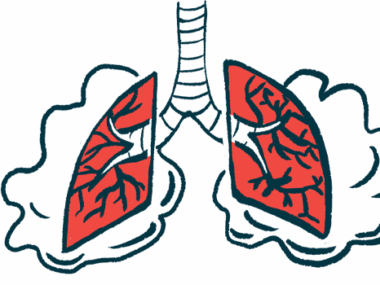Higher COPD genetic risk linked to lower childhood lung function
Associations not affected by smoking, sex, or asthma diagnosis
Written by |

A higher genetic risk for chronic obstructive pulmonary disease (COPD) is associated with reduced lung function starting in childhood, a study of more than 45,000 people across Europe shows.
A person’s genetic makeup plays a key role in lung health early on, increasing the risk for COPD later in life, the findings suggest.
“The fact that we have been able to show in a robust and objective way that COPD genes also affect lung function already in childhood is a paradigm shift,” Erik Melén, MD, PhD, a professor of pediatrics at the Karolinska Institutet in Sweden, said in an institute press release. “I hope it will mean that we can not only identify people at risk in time but also help to wash away the old ‘stigma of COPD’, as we now know that the disease process can begin early in life.”
The study, “Exploring the genetics of airflow limitation in lung function across the lifespan — a polygenic risk score study,” was published in eClinicalMedicine. It was conducted by an international team of researchers and co-led by Melén.
Typically diagnosed in adulthood, COPD is a chronic inflammatory lung disease wherein the airways become progressively blocked, limiting airflow and breathing. It’s usually caused by long-term exposure to cigarette smoke or other environmental factors such as dust, air pollution, or inhaled chemicals. Growing evidence suggests a person’s genetic makeup may also determine how likely they are to develop COPD by affecting how their lungs develop, however.
“Individual genetic liability is established since conception, suggesting that the genetic susceptibility for COPD also begins in early life,” the researchers wrote.
Previous studies identified 82 genetic variants associated with an increased susceptibility for adult COPD, which is defined as limited airflow.
Increased COPD genetic risk and lower lung function
To assess whether a higher genetic risk for COPD may explain reduced childhood lung function, researchers used the variants to calculate a polygenic risk score (PRS), which helps predict a person’s genetic predisposition to disease, for 111,959 people, mostly of European descent, followed in the Chronic Airway Diseases Early Stratification (CADSET), a clinical research collaboration. They then looked at how the PRS related to lung function in 45,406 of those people, ages 4-50.
Those with a higher PRS, meaning a higher genetic risk for airflow limitation, had reduced lung function starting from ages 7 to 10 and continuing into the oldest adulthood group, aged 41-50.
“The link between genetic variants of COPD and impaired lung function was already strong in children from preschool age,” Natalia Hernandez-Pacheco, PhD, a researcher at Melén’s lab and one of the study’s authors, said.
Specifically, a higher PRS was significantly linked to lower scores on forced expiratory volume in the first second (FEV1) and/or the ratio of FEV1 to forced vital capacity (FVC), indicating poorer lung function. FEV1 measures the amount of air that can be forced out of the lungs in a second and the FEV1/FVC measures the amount of air that can be forced out in a full breath.
“Our results provide firm evidence that genetic variants linked to an increased risk for COPD (i.e., moderate to severe airflow limitation) are also associated with lower lung function across the life course from childhood to adulthood,” the researchers wrote.
Similar associations were detected among 9,027 people aged 50 years and older, “which is an age group when COPD is more prevalent,” the researchers wrote. In this older age group, lower lung function scores were also observed among those with the highest PRS.
The observed associations across age groups were generally not affected by smoking, sex, or a diagnosis of asthma.
“This study provides fundamental evidence of the link between the genetics of airflow limitation linked to COPD and lung function, primarily FEV1/FVC, across the life course independent of tobacco smoking,” the researchers wrote. “This has important implications for COPD prevention as early in life as possible.”
The researchers now want to investigate how to prevent COPD in those who are more likely to develop it due to their genetic makeup.
“We want to investigate whether it is possible to carry out measurements of lung function in children, for example in school health care, in the same way that height and weight are measured today,” Melén said. “It is also important to target preventive efforts in lung health toward those who are at increased risk of developing COPD in the future.”






